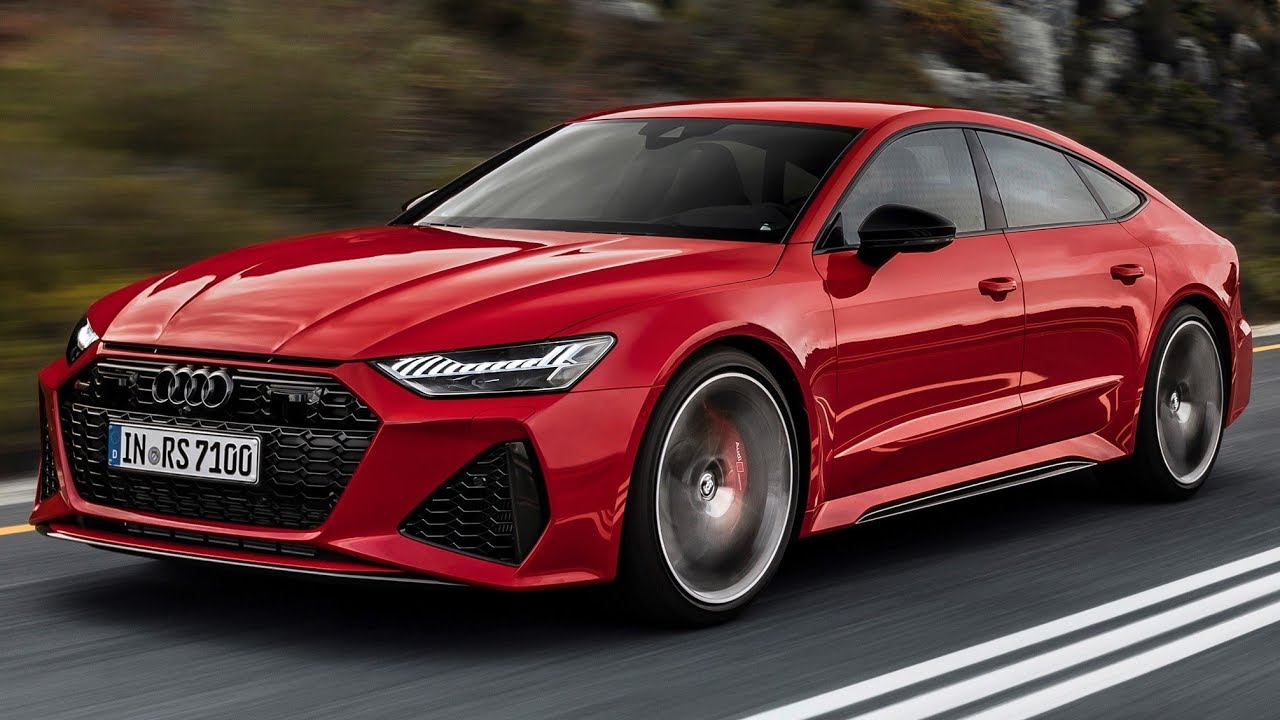2020 Audi RS 7 – Luxury High-Performance Sportback. 2020 Audi RS 7 Sportback – Exhaust Sound, Drive, Interior and Exterior. Subscribe.
The 4.0 TFSI in the new Audi RS 7 Sportback produces 441 kW (600 metric hp) and delivers 800 Nm (590 lb-ft) of torque within a broad range from 2,050 to 4,500 rpm. The high-performance Sportback will sprint from 0 to 100 km/h (0 to 62.1 mph) in only 3.6 seconds. The top speed is electronically limited to 250 km/h (155.3 mph); this can be increased to 280 km/h (174 mph) with the Dynamic package and to 305 km/h (189.5 mph) with the Dynamic plus package.
Thanks to its mild hybrid system (MHEV) with a 48-volt main on-board electrical system, the 4.0 TFSI combines maximum performance with high efficiency. The belt alternator starter can recover up to 12 kW power under gentle acceleration and feed it into a lithium-ion battery as electricity. If the driver releases the accelerator at a speed between 55 and 160 km/h (34.2 to 99.4 mph), the drive management will select one of two options. Depending on the driving situation and the settings in Audi drive select, the new RS 7 Sportback will either recover energy or coast with the engine switched off. When the driver steps on the accelerator, the belt alternator starter will start the engine again. MHEV technology allows for start-stop mode at speeds below 22 km/h (13.7 mph). As soon as the vehicle in front of the new RS 7 Sportback starts moving, the engine will spring back to life—even if the brakes are applied. With the MHEV-technology it is possible to reduce fuel consumption by as much as 0.8 liters per 100 kilometers.
The cylinder on demand (COD) system is another weapon in the vehicle’s armory when it comes to efficiency. In higher gears at low to medium loads and engine speeds, it will deactivate cylinders 2, 3, 5, and 8 by halting injection and ignition and closing the intake and exhaust valves. In four-cylinder mode, the operating points will switch to the active cylinders at higher loads, thereby improving efficiency, while the deactivated cylinders continue to run like gas springs, largely without any losses. When the driver presses the accelerator pedal, they are reactivated immediately. Each switchover takes mere milliseconds and is virtually undetectable by the driver and passengers.
The four-liter engine produces a full-bodied and sporty V8 sound. The Audi drive select dynamic handling system allows adjustments to the sonorous growl of the power unit. The optional RS sport exhaust system with black tailpipe trim provides an even fuller sound. In the customizable RS1 and RS2 modes, customers can decide for themselves whether they want a sporty or balanced sound.
The power produced by the 4.0 TFSI flows via the standard eight-speed tiptronic transmission with optimized shift times and a new launch control function to the quattro permanent all-wheel drive system. Drive forces are distributed to the front and rear axles in a 40:60 ratio via the purely mechanical center differential. If one wheel slips, more drive torque automatically goes to the axle with the better traction. Up to 70 percent can flow to the front wheels and up to 85 percent to the back wheels.
The wheel-selective torque control optimizes the agile and confident handling of the new RS 7 Sportback, applying the brakes gently to the wheels on the inside of a bend before they have the chance to slip. The quattro sport differential, available with the optional Dynamic and Dynamic plus packages, shifts the torque between the rear wheels as needed during sporty cornering, thereby improving traction, stability, and dynamics.
Five-link front and rear axles handle the lateral and longitudinal forces independently on the new RS 7 Sportback. The linkages and the subframes are made largely of aluminum. The track is 1,668 millimeters (65.7 in) at the front and 1,650 millimeters (65 in) at the rear.
The standard RS adaptive air suspension with controlled damping has been tuned specifically to suit the RS and now allows the new RS 7 Sportback to reach a top speed of 305 km/h (189.5 mph) thanks to a new air spring module with a spring rate 50% higher. The sport air suspension can be set to three modes and includes automatic level control. In the normal position, the body of the new RS 7 Sportback sits 20 millimeters (0.8 in) lower than an Audi A7 Sportback with standard suspension. At speeds above 120 km/h (74.6 mph), it will drop by a further 10 millimeters (0.4 in) and offer a lift mode enabling the vehicle to be raised by 20 millimeters (0.8 in) if requested. The pronounced kingpin inclination of the RS sport air suspension offers the driver a free choice between long-distance comfort and top performance.









